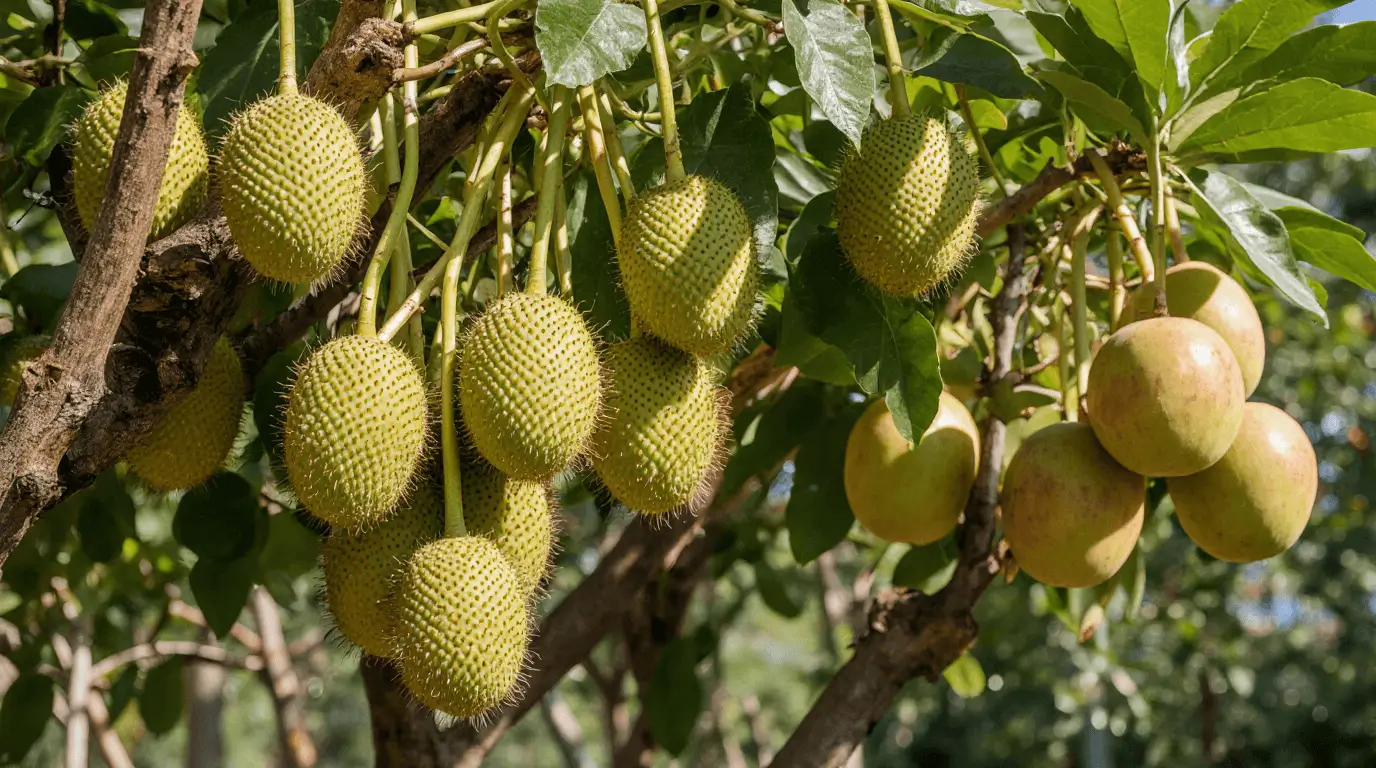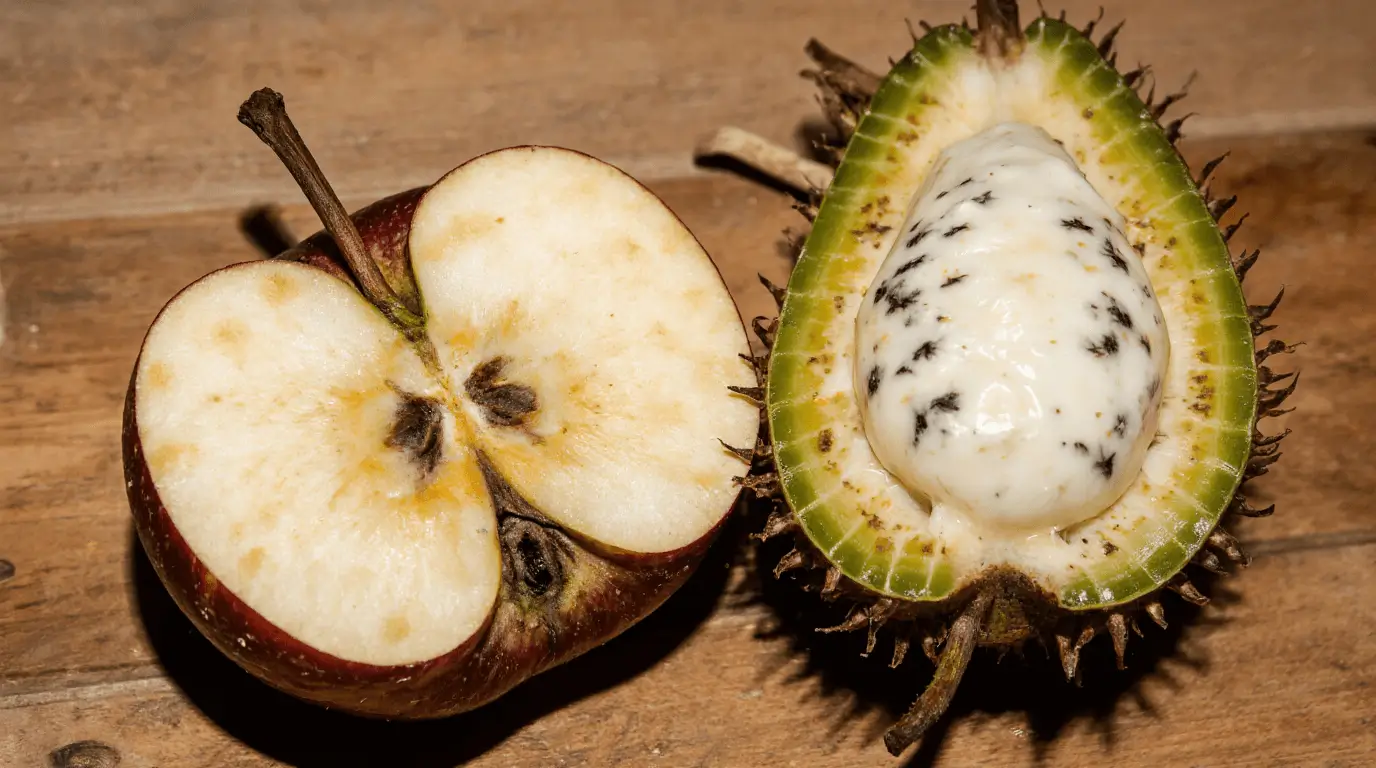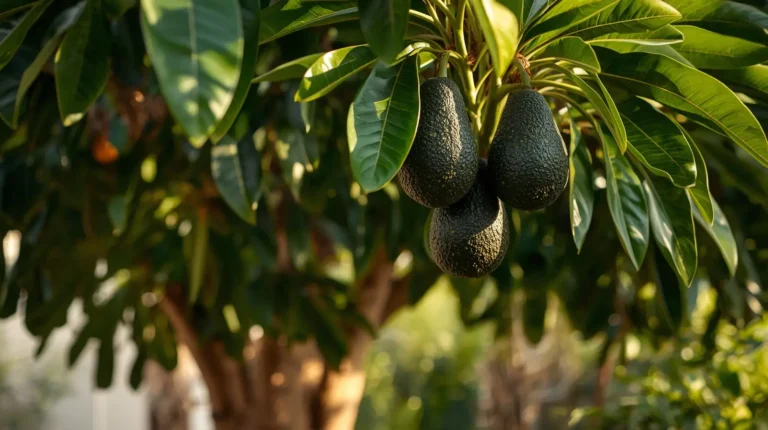When exploring tropical fruits, I’ve often found people confused between soursop vs custard apple because of their similar appearance and creamy texture. However, these two fruit varieties belong to different plant families, which gives them distinct flavors, health benefits, and unique uses in daily life. From my experience tasting both, each one feels special in its own way—while soursop carries a slightly tangy, refreshing flavor, custard apple offers a sweeter, dessert-like taste. Once you learn to tell apart these fruits, you begin to appreciate how wonderfully diverse tropical nature can be.
What Is Soursop?
The soursop, also known scientifically as Annona muricata, is a green, spiky fruit that I first came across during a visit to Central America. It also grows widely in South America, thriving on a small evergreen tree that gives this fruit its unique tropical charm. The soft white pulp inside feels creamy and rich, and its sweet-sour flavor reminds me of a refreshing mix between pineapple and strawberry—a combination that instantly awakens your taste buds.
Key characteristics that make soursop stand out include:
- Spiny green skin that protects its juicy interior
- A tart, citrusy taste with a smooth, velvety texture
- Commonly used in juices, smoothies, and desserts for its natural sweetness and tang
What Is Custard Apple?
The custard apple, scientifically known as Annona reticulata, is often called the sugar apple and is one of my favorite tropical fruits because of its heart-shaped appearance and smoother skin compared to soursop. Its sweeter flavor and milder flavor make it a delightful treat, often reminding me of a blend of vanilla and banana when perfectly ripe.
Here are a few unique traits that define this delicious fruit:
- A knobby green exterior or slightly bumpy green exterior gives it a natural charm.
- Inside, it has creamy pulp with a custard-like pulp texture that melts in your mouth.
- It contains high natural sugars, making it best when eaten raw with a spoon for a naturally sweet experience.
Health Benefits of Both Fruits
Both soursop and custard apple are rich in nutrients and have long been valued in traditional medicine for their healing potential passed down through centuries. From my own experience studying tropical fruits, their benefits truly support overall wellness in natural ways.

Soursop
- Soursop is known for its anti-inflammatory properties, helping the body maintain immune health.
- It also provides fiber and vitamin B1, which aid in energy and metabolism
Custard apple
- Custard apple naturally boosts energy levels, making it a great addition to daily diets.
- It’s also a good source of magnesium and iron, essential for strength and vitality.
Fun Facts About Soursop and Custard Apple
- The soursop tree can grow up to 30 feet tall, while custard apples come from the same botanical family as cherimoya.
- Soursop seeds are toxic if consumed raw, so it’s important to remove them before eating.

- Custard apple trees thrive in dry tropical climates with less rainfall, unlike soursop.

- In the Caribbean, soursop is often made into herbal tea, while in Ayurvedic medicine, custard apple leaves are used to treat cold symptoms.

- Both fruits are low fat and cholesterol-free, offering a healthy choice for anyone watching their diet.
- Soursop becomes sweeter as it ripens off the tree, while custard apples ripen quickly and should be eaten within a few days.

- They’re gaining popularity in natural health supplements and skincare for their nutritious and delicious qualities.
- Despite some similarities, both are unique fruits, each with its own tangy flavor, tropical flavor, and creamy sweetness that make them stand out.

I’ve always found it fascinating how these two tropical treasures, though from the same family, differ so much in flavor and use. From sipping soursop herbal tea on a warm Caribbean afternoon to enjoying a chilled custard apple with its soft creamy sweetness, both add something truly special to a healthy and flavorful lifestyle.
Read Also: Tropical Fruit Trees: Grow Exotic Paradise at Home (Grow Guide)
Conclusion
In conclusion, both soursop and custard apple bring a taste of the tropics right into your kitchen—each with its own charm, flavor, and health benefits. While soursop offers a tangy, refreshing taste packed with vitamin-rich goodness, custard apple delights with its smooth, dessert-like sweetness and energizing nutrients. Understanding the differences between these two tropical fruits not only enhances your appreciation for their natural beauty but also helps you make smarter, health-conscious choices. Whether you enjoy a creamy custard apple or a chilled glass of soursop juice, both fruits promise a delicious way to support wellness and experience the best nature has to offer.
Read Also: Natural Healing & Wellness: Nature’s Remedies Guide

FAQs
- Are soursop and custard apple the same fruit?
No, they may look similar but are different species. Soursop (Annona muricata) has a tangy flavor, while custard apple (Annona reticulata) is much sweeter and creamier. - Which fruit is healthier: soursop or custard apple?
Both are healthy, but soursop is known for its anti-inflammatory and immune-boosting properties, while custard apple offers energy and mineral support through magnesium and iron. - Can you eat soursop seeds like custard apple seeds?
No, soursop seeds are toxic if eaten raw and must always be removed before consumption, unlike custard apple seeds which are also not edible but less toxic. - How can you tell the difference between soursop and custard apple?
Soursop has spiky green skin and a tangy-sour taste, while custard apple has a smooth or bumpy exterior with a sweet, vanilla-like flavor. - How should you eat soursop and custard apple?
Soursop is great for juices, smoothies, and desserts, while custard apple is best enjoyed fresh with a spoon for its rich, creamy pulp.




